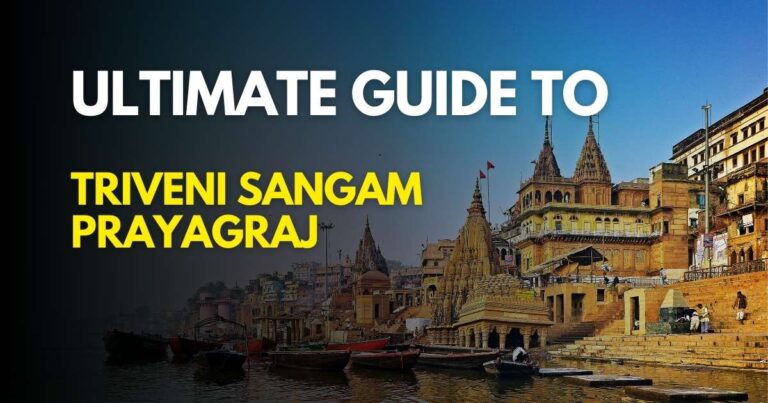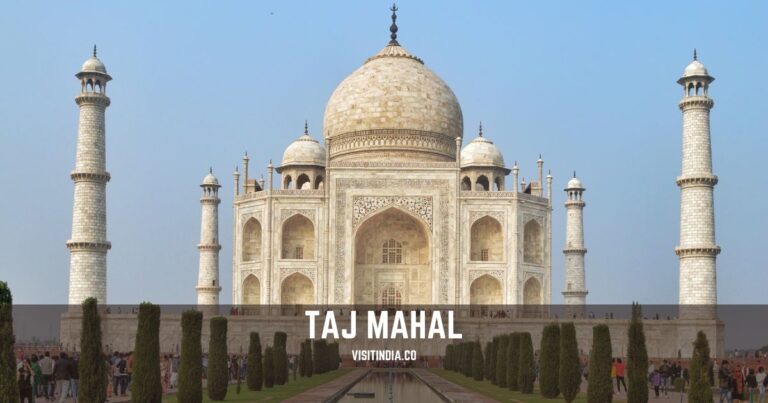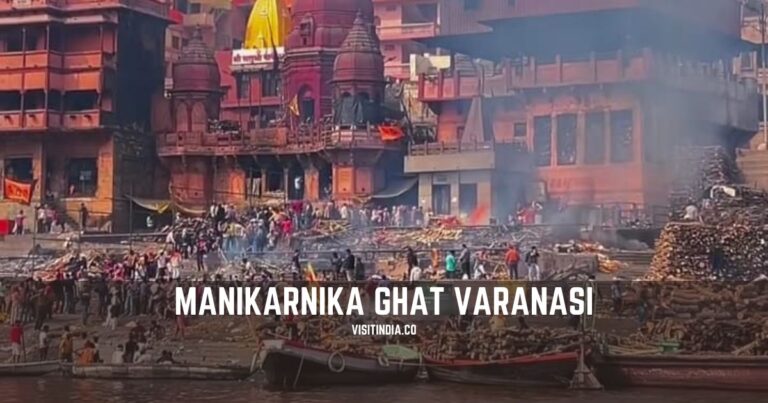Ghats of Varanasi: Complete List with Names, Types, Timings & Details
Standing on the banks of the Ganges, Varanasi’s ghats embody the city’s soul, blending history, spirituality, and daily life into a captivating experience. These steps leading to the river aren’t just architectural marvels—they’re living symbols of tradition, prayer, and celebration.
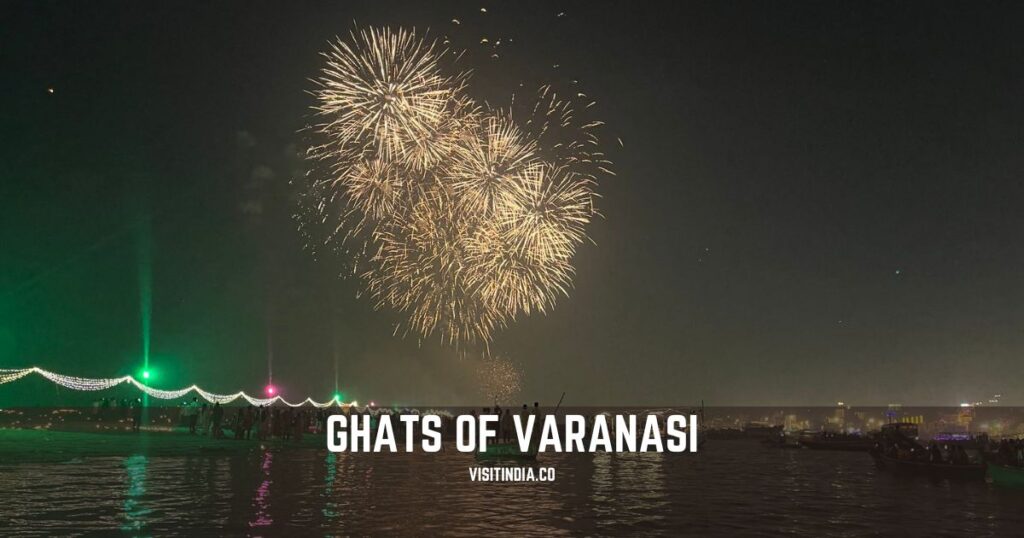
From the bustling Dashashwamedh Ghat to the serene Scindia Ghat, each has its own story to tell. This article takes you through a comprehensive list of the ghats, their significance, types, and the best times to visit.
See also: Best Things to Do in Varanasi
Types of Ghats in Varanasi
Varanasi is renowned for its ghats—stepped embankments leading to the sacred Ganges River. These ghats serve as pivotal centers for religious rituals, cultural events, and daily life. With a total of 84 ghats, each holds its unique significance and purpose.
Bathing Ghats in Varanasi: Their Purpose and Significance in Purification Rituals
Bathing ghats are integral to Varanasi’s spiritual fabric. Devotees flock to these steps to perform ablutions, believing that immersing in the Ganges purifies the soul and absolves sins.
Among the most frequented is Dashashwamedh Ghat, celebrated for its vibrant atmosphere and the daily Ganga Aarti ceremony.
Another notable bathing ghat is Assi Ghat, situated at the confluence of the Ganges and Assi rivers, attracting pilgrims and tourists alike.
Cremation Ghats in Varanasi: Explanation of Manikarnika and Harishchandra Ghats
Cremation ghats hold profound importance in Hindu beliefs, symbolizing the cycle of life and death. Manikarnika Ghat stands as one of the most sacred cremation sites, where it’s believed that those cremated here attain moksha, or liberation from the cycle of rebirth.
Similarly, Harishchandra Ghat is another prominent cremation site, named after the legendary King Harishchandra, who is said to have worked here as a cremator to uphold his commitment to truth and charity.
Cultural Ghats in Varanasi: Venues for Art, Music, and Festivals
Beyond their religious significance, several ghats serve as cultural hubs. Dashashwamedh Ghat, for instance, is renowned for the daily Ganga Aarti, a mesmerizing ritual involving fire, music, and dance that draws large crowds each evening.
Assi Ghat often hosts musical performances, yoga sessions, and festivals, making it a lively spot for both locals and visitors. These cultural activities enrich the spiritual ambiance of the ghats, offering a blend of devotion and entertainment.
Total Number of Ghats in Varanasi and Their Categorization Based on Uses
Varanasi boasts 84 ghats, each with distinct roles:
- Bathing Ghats: Primarily used for daily rituals and purification.
- Cremation Ghats: Dedicated to funeral rites and ceremonies.
- Cultural Ghats: Venues for artistic performances, festivals, and social gatherings.
This categorization underscores the multifaceted nature of the ghats, reflecting the city’s rich tapestry of spiritual, cultural, and social life.
Prominent Ghats of Varanasi
Each of the Varanasi ghat holds its own unique significance, weaving together the city’s rich tapestry of history, culture, and spirituality. Let’s embark on a journey through some of the most prominent ghats of Varanasi.
Dashashwamedh Ghat
Situated near the Kashi Vishwanath Temple, Dashashwamedh Ghat stands as one of Varanasi’s oldest and most vibrant ghats.
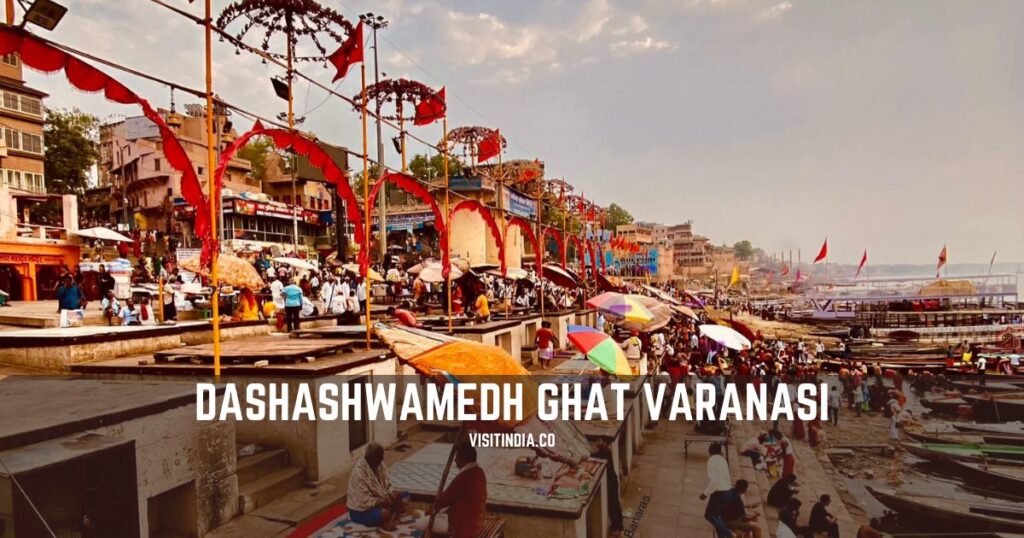
According to legend, Lord Brahma performed ten horse sacrifices (Ashwamedha Yajna) here, giving the ghat its name. Every evening, the ghat comes alive with the Ganga Aarti—a mesmerizing ritual involving fire, chants, and dance, drawing both devotees and tourists alike.
Assi Ghat
Located at the confluence of the Ganges and the Assi River, Assi Ghat marks the city’s southern boundary. It’s a hub for morning rituals, yoga sessions, and cultural gatherings.
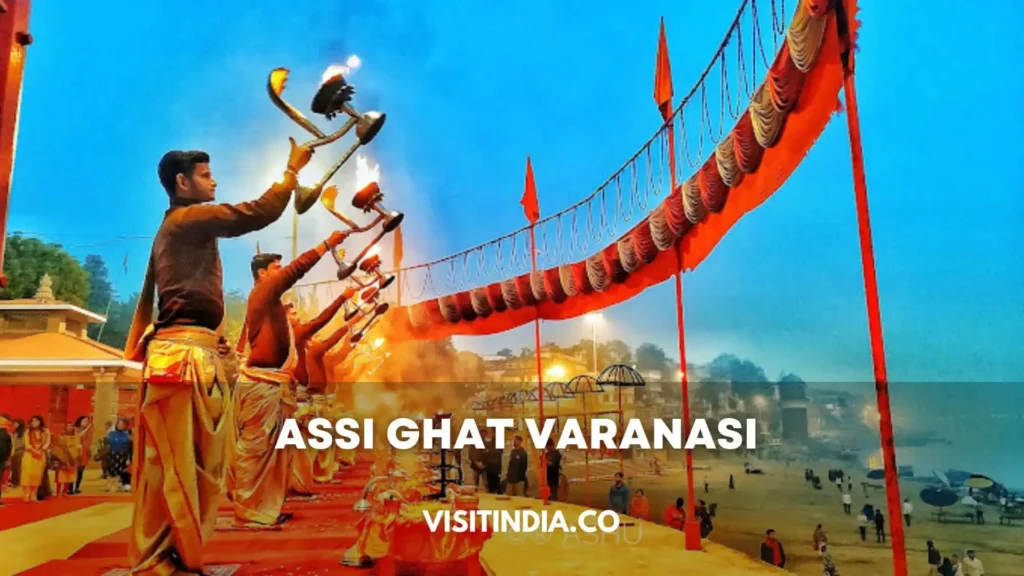
The ghat is also associated with the poet-saint Tulsidas, who is believed to have completed the ‘Ramcharitmanas’ here.
Manikarnika Ghat
As the principal cremation site in Varanasi, Manikarnika Ghat embodies the Hindu belief in the cycle of life and death. It’s believed that those cremated here attain moksha, or liberation from the cycle of rebirth.
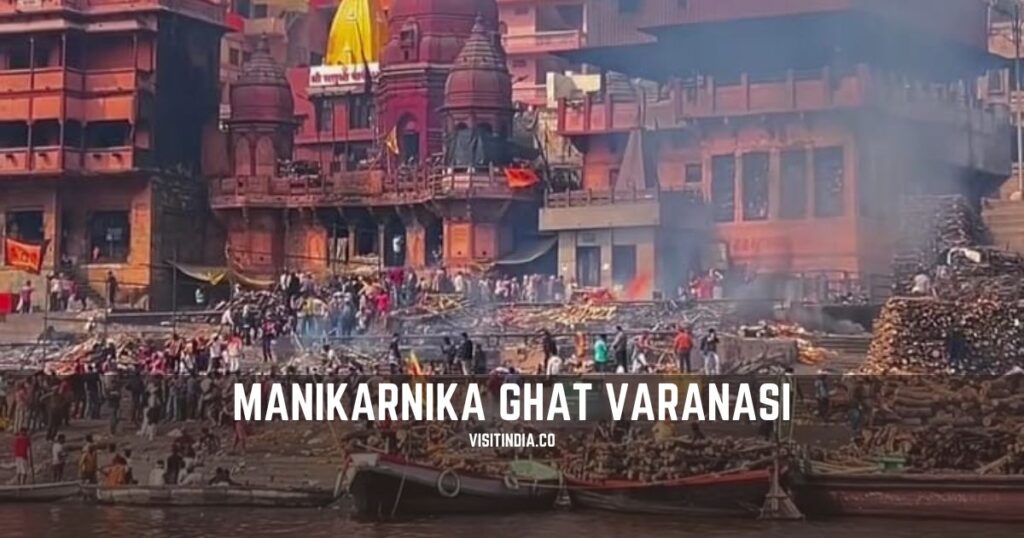
The ghat is steeped in mythology, with tales linking it to Lord Shiva and Goddess Parvati.
Harishchandra Ghat
Another significant cremation ghat, Harishchandra Ghat is named after the legendary King Harishchandra, known for his unwavering commitment to truth and duty. The ghat serves as a poignant reminder of the transient nature of life.
Tulsi Ghat
Named after the revered poet-saint Tulsidas, Tulsi Ghat holds a special place in literary history. It’s believed that Tulsidas composed parts of the ‘Ramcharitmanas’ here. The ghat also hosts various cultural and religious festivals, celebrating the rich traditions of Varanasi.
Chet Singh Ghat
With its picturesque setting, Chet Singh Ghat is notable for its historical significance. It was the site of a fierce battle between Maharaja Chet Singh and British forces in the 18th century. The ghat’s fort-like structure stands as a testament to its storied past.
Scindia Ghat
Scindia Ghat is distinguished by its partially submerged Shiva temple, which sank during the construction of the ghat about 150 years ago. The ghat offers a serene ambiance, making it a peaceful retreat from the city’s hustle and bustle.
Darbhanga Ghat
Known for its royal heritage, Darbhanga Ghat features stunning architecture, including a palace built by the royal family of Darbhanga. The ghat’s grandeur reflects the opulence of its erstwhile patrons.
Kedar Ghat
Popular among South Indian pilgrims, Kedar Ghat is home to a temple dedicated to Lord Shiva, resembling the Kedareshwar temple in Uttarakhand. The ghat’s vibrant atmosphere is enhanced by the daily rituals and ceremonies performed here.
Panchganga Ghat
Revered for its spiritual significance, Panchganga Ghat is believed to be the confluence of five sacred rivers: the Ganges, Yamuna, Saraswati, Kirana, and Dhutapapa. The ghat is also home to the Alamgir Mosque, showcasing a blend of Hindu and Mughal architecture.
Each of these ghats contributes to the unique spiritual and cultural landscape of Varanasi, offering visitors a glimpse into the city’s timeless traditions and enduring faith.
Daily Life and Rituals at the Ghats of Varanasi
The ghats of Varanasi are not just steps leading to the Ganges; they are the heartbeat of the city’s daily life and spiritual practices. From the break of dawn to the quiet of night, these riverfronts witness a tapestry of rituals, festivals, and routines that define the essence of Varanasi.
Morning and Evening Rituals at Varanasi Ghats
As the first light touches the Ganges, the ghats come alive with activity. Devotees gather for their morning ablutions, believing that a dip in the sacred river purifies the soul and washes away sins.
The air fills with the soft murmurs of prayers and the fragrance of incense, creating a serene atmosphere. Yoga enthusiasts often practice on the ghats, embracing the tranquility of the early hours.
Evenings bring a different energy. The renowned Ganga Aarti at Dashashwamedh Ghat is a spectacle of devotion and artistry.
Priests perform synchronized rituals with lamps, accompanied by chants and music, offering light to the river goddess. This ceremony draws both locals and visitors, creating a communal experience of spirituality.
Festivals and Events Unique to Each Varanasi Ghat
Each ghat in Varanasi has its own identity, hosting festivals and events that reflect its unique significance:
- Dashashwamedh Ghat: Beyond the daily Ganga Aarti, this ghat is central during the Ganga Mahotsav, a five-day festival celebrating the river’s cultural importance. The festival features music, dance, and boat races, culminating in a grand aarti.
- Assi Ghat: Known for its vibrant cultural scene, Assi Ghat hosts morning aartis and yoga sessions, attracting those seeking spiritual and physical rejuvenation. It’s also a hub during festivals like Mahashivratri, where devotees gather in large numbers.
- Tulsi Ghat: This ghat holds a special place in literary history, being associated with the poet-saint Tulsidas. Festivals honoring his contributions, such as the Nag Nathaiya festival, are celebrated here with enactments of episodes from Lord Krishna’s life.
Integration into Daily Life
For the residents of Varanasi, the ghats are integral to daily routines. Locals visit for morning baths, perform rituals, and offer prayers, maintaining traditions passed down through generations.
Pilgrims from various parts of India come to the ghats to perform rites, seek blessings, or immerse ashes of loved ones, believing it aids in attaining moksha (liberation).
The ghats also serve as social spaces where people gather, share stories, and engage in communal activities, reinforcing the strong sense of community that characterizes Varanasi.
In essence, the ghats of Varanasi are more than physical structures; they are living entities that embody the city’s spiritual fervor, cultural richness, and communal harmony.
Varanasi Ghats and Mythological Connections
The ghats of Varanasi are not just physical structures but are deeply intertwined with Hindu mythology, each carrying stories that add to their spiritual significance.
Dashashwamedh Ghat is believed to have been created by Lord Brahma to welcome Lord Shiva. The name “Dashashwamedh” translates to “ten horse sacrifices,” referring to the ten Ashwamedha Yajnas Brahma is said to have performed here.
Panchganga Ghat holds a special place in mythology as the confluence of five sacred rivers: the Ganga, Yamuna, Saraswati, Kirana, and Dhutapapa. While only the Ganga is visible today, it’s believed that the other four rivers merge here in subtle forms, enhancing the ghat’s sanctity.
Manikarnika Ghat is steeped in legends involving both Lord Vishnu and Lord Shiva. One tale narrates that while Vishnu was performing penance here, a well, the Manikarnika Kund, emerged. Another story tells of an earring (Manikarnika) of Shiva or his consort Sati falling into the kund, giving the ghat its name.
Other ghats also have rich mythological backgrounds. Assi Ghat is mentioned in the Puranas as the place where the goddess Durga defeated the demons Shumbha and Nishumbha.
Tulsi Ghat is associated with the poet-saint Tulsidas, who is believed to have composed parts of the ‘Ramcharitmanas’ here. These stories not only highlight the spiritual importance of the ghats but also connect them to the broader tapestry of Hindu mythology.
The Cremation Ghats of Varanasi: Manikarnika and Harishchandra
Strolling along the Ganges in Varanasi, you might notice two ghats that stand apart due to their profound significance: Manikarnika and Harishchandra. These places are not just steps leading to the river; they are sacred grounds where the circle of life and death is deeply honored.
In Hindu beliefs, being cremated at these ghats and having one’s ashes immersed in the Ganges is thought to free the soul from the cycle of rebirth, achieving moksha, or liberation. Manikarnika Ghat is especially revered for this purpose. It’s said that Lord Shiva whispers the mantra of salvation into the ears of those cremated here, guiding them towards enlightenment.
Harishchandra Ghat, while less frequented than Manikarnika, holds its own spiritual weight. Named after King Harishchandra, who is celebrated for his unwavering commitment to truth and duty, this ghat embodies the virtues of honesty and sacrifice. The cremation rites performed here reflect traditions that have been upheld for centuries.
For visitors, witnessing the rituals at these ghats can be a profound experience. It’s a window into customs that are both deeply personal and universally human. If you decide to visit, it’s important to approach with respect and sensitivity.
Photography is generally discouraged, especially during ceremonies, to honor the privacy of those in mourning. Observing quietly allows you to reflect on the cultural practices without intrusion.
Visitor’s Guide to the Ghats of Varanasi
Experiencing the ghats of Varanasi is a sensory and spiritual journey, offering something unique for every visitor. Knowing when and how to explore these iconic riverfronts can help you make the most of your trip while respecting their sacred significance.
For those interested in the grandeur of the Ganga Aarti, Dashashwamedh Ghat is the place to be. Evenings are ideal, as the ceremony unfolds against the backdrop of the setting sun, creating a mesmerizing ambiance. Assi Ghat, on the other hand, is best visited in the early morning. Here, you’ll find yoga sessions, soulful music, and the gentle hum of morning prayers, perfect for starting the day with tranquility.
Photography enthusiasts often flock to Scindia and Darbhanga Ghats. The partially submerged temples at Scindia Ghat offer an unusual charm, while Darbhanga’s regal architecture and serene surroundings make it a stunning spot to capture memories. Early mornings and late afternoons provide the best lighting for your shots.
When exploring the ghats, consider taking a boat ride along the Ganges. This offers a panoramic view of the ghats and their activities while providing a peaceful escape from the bustling crowds. Guided tours are another excellent option, as they provide historical insights and fascinating stories tied to each ghat.
Respect for local customs is crucial, particularly at sacred sites like Manikarnika and Harishchandra Ghats. These cremation ghats hold deep cultural and religious significance, so visitors should observe quietly and avoid taking photos. Dressing modestly, removing shoes when required, and maintaining a respectful distance during rituals go a long way in honoring the traditions of the locals.
The ghats are not just locations; they are living embodiments of Varanasi’s soul. Whether you’re here for spiritual reflection, cultural immersion, or just to soak in the atmosphere, following these tips will ensure a meaningful and enriching visit.
List of 84 Ghat Names in Varanasi
| Sr No | Ghat Name |
|---|---|
| 1 | Assi Ghat |
| 2 | Ganga Mahal Ghat |
| 3 | Rewa Ghat |
| 4 | Tulsi Ghat |
| 5 | Bhadaini Ghat |
| 6 | Janaki Ghat |
| 7 | Anandamayi Ghat |
| 8 | Vaccharaja Ghat |
| 9 | Jain Ghat |
| 10 | Nishadraj Ghat |
| 11 | Panchakot Ghat |
| 12 | Kedar Ghat |
| 13 | Chauki Ghat |
| 14 | Harishchandra Ghat |
| 15 | Hanuman Ghat |
| 16 | Prabhu Ghat |
| 17 | Shivala Ghat |
| 18 | Gularia Ghat |
| 19 | Dandi Ghat |
| 20 | Ahilyabai Ghat |
| 21 | Jatara Ghat |
| 22 | Vijayanagaram Ghat |
| 23 | Kshemeshwar Ghat |
| 24 | Chausatthi Ghat |
| 25 | Rana Mahal Ghat |
| 26 | Darbhanga Ghat |
| 27 | Babua Pandey Ghat |
| 28 | Munshi Ghat |
| 29 | Dashashwamedh Ghat |
| 30 | Prayag Ghat |
| 31 | Rajendra Prasad Ghat |
| 32 | Man Mandir Ghat |
| 33 | Tripura Bhairavi Ghat |
| 34 | Mira Ghat |
| 35 | Lalita Ghat |
| 36 | Nepali Ghat |
| 37 | Bajirao Ghat |
| 38 | Scindia Ghat |
| 39 | Shitala Ghat |
| 40 | Manikarnika Ghat |
| 41 | Jalasayi Ghat |
| 42 | Panchganga Ghat |
| 43 | Lal Ghat |
| 44 | Gola Ghat |
| 45 | Sati Ghat |
| 46 | Naya Ghat |
| 47 | Ram Ghat |
| 48 | Mansarovar Ghat |
| 49 | Narad Ghat |
| 50 | Raja Ghat |
| 51 | Khidkiya Ghat |
| 52 | Bhaironath Ghat |
| 53 | Adi Shankaracharya Ghat |
| 54 | Digpatia Ghat |
| 55 | Chousatti Ghat |
| 56 | Rana Mahal Ghat |
| 57 | Darbhanga Ghat |
| 58 | Munshi Ghat |
| 59 | Ahilyabai Ghat |
| 60 | Sitala Ghat |
| 61 | Dashashwamedh Ghat |
| 62 | Prayag Ghat |
| 63 | Rajendra Prasad Ghat |
| 64 | Man Mandir Ghat |
| 65 | Tripura Bhairavi Ghat |
| 66 | Mira Ghat |
| 67 | Lalita Ghat |
| 68 | Nepali Ghat |
| 69 | Bajirao Ghat |
| 70 | Scindia Ghat |
| 71 | Shitala Ghat |
| 72 | Manikarnika Ghat |
| 73 | Jalasayi Ghat |
| 74 | Panchganga Ghat |
| 75 | Durga Ghat |
| 76 | Bhosale Ghat |
| 77 | Gai Ghat |
| 78 | Lali Ghat |
| 79 | Mehta Ghat |
| 80 | Prachina Ghat |
| 81 | Karnataka State Ghat |
| 82 | Chet Singh Ghat |
| 83 | Niranjani Ghat |
| 84 | Adi Keshava Ghat |
Final Thoughts on Ghats of Varanasi
The ghats of Varanasi are more than just steps leading to the Ganges—they are a reflection of India’s timeless culture, spirituality, and traditions. Each ghat holds its own charm and significance, offering something special to those who visit.
From witnessing the vibrant Ganga Aarti at Dashashwamedh to the quiet moments of reflection at lesser-known ghats, every experience adds to the magic of this sacred city. Whether you’re drawn by the myths, the rituals, or the sheer beauty of these riverfronts, Varanasi’s ghats promise a journey unlike any other.
As you explore, remember to tread respectfully, embracing the wisdom and spirituality that have made this city a beacon of devotion for centuries.



